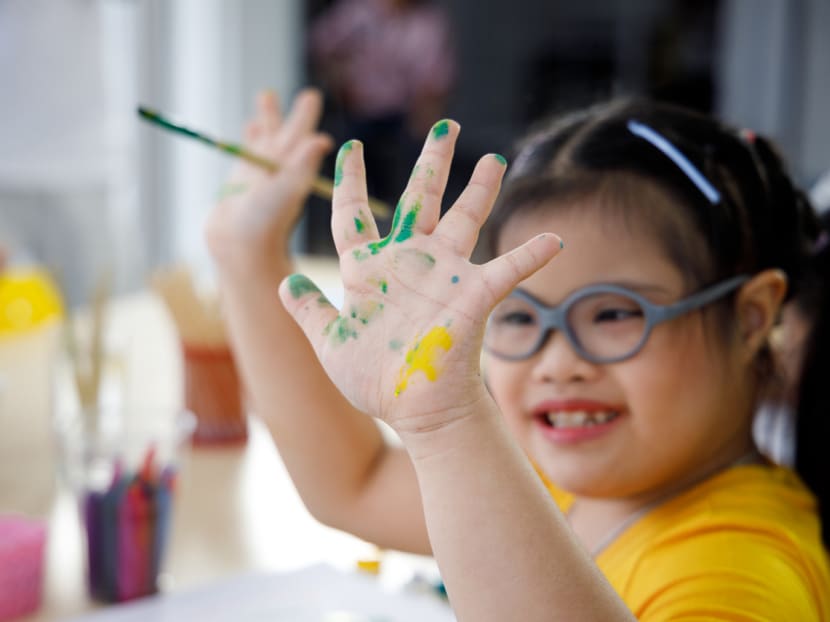Opening our eyes to Down syndrome and how others live with disability

The author, a fourth-year medical student in university and part-time tutor, writes about how reading an article about Down syndrome with her tutee gave her a chance to rediscover the condition from a more humanistic point of view beyond the hard facts learnt in medical school.
I have been teaching T, a secondary school student, English as her part-time tutor since she was in Primary 6. Recently, we began examining news articles together as reading exercises.
The most recent commentary we perused was The Last Children of Down Syndrome in the news magazine The Atlantic.
The article was an extended piece on how prenatal testing has altered the odds drastically for children with Down syndrome, and examines the moral judgements that accompany bringing or not bringing a child with disability into the world.
The reading exercises were a great way for T to pick up new vocabulary and observe the rules of grammar as applied in sentences, as well as to expand her worldview.
“Have you seen a child with Down syndrome before?” I asked.
“They look funny,” she scrunched up her face, with the scathing honesty of a 13-year-old.
I tried to reshape her perspective into something a little kinder. “They might look different from the rest of us,” I remarked, “but we are still very much the same people.”
“All of us are predisposed to one trait or another as a result of our genetic makeup,” I explained.
“Children with Down syndrome just happen to have an extra copy of the chromosome 21. This manifests as certain characteristics, for example, their distinctive facial features.”
“Being born is like being a part of the lottery,” I breathed, pausing.
“Most times, we don’t get a chance to choose.”
T tilted her head and was deep in thought.
When I decided to use the piece on Down syndrome for our lesson, I knew it was going to be more than just a “reading exercise”.
We would be having conversations that went beyond the mere form of the article to its crux — conversations that would be difficult, conversations I thought hard about how to facilitate in a nuanced and responsible way.
As I analysed the meaning of each paragraph, taking apart the arguments and reading between the lines, I was also deconstructing and putting back together a part of the world for T.
The moment you land your eyes on the slanted epicanthal folds, flattened nose bridge, and most unmistakably, the extra copy of the chromosome 21, you instinctively know. But what is Down syndrome, really?
The well-meaning cliché of children with Down syndrome being “angelic” and “happy-go-lucky” takes away from the texture and contour of growing up with the condition, as well as the reality and complexity of caring for such a child.
In fact, Down syndrome is not a singular condition, and those affected exist on a spectrum.
While Down syndrome is associated with diseases such as early-onset Alzheimer’s, leukemia, and congenital heart defects, the severity of these complications is often not known until birth or later.
Those with more severe forms of Down syndrome might spend years in and out of the hospital for repeated valvular heart surgeries, or be placed on permanent stoma bags to relieve their gastrointestinal problems.
On the other hand, those with milder forms of the syndrome can lead relatively normal lives, learning to read and write, or even holding down full-time jobs and starting families of their own.
Nevertheless, most children with Down syndrome are just like me and you, with their own obsessions, aspirations, and idiosyncrasies.
Although some might be slower to perceive speech and language or less able to internalise the world around them, they similarly yearn to connect with others and be understood as individuals.
Recalling my own childhood, there was a pair of twins with dwarfism, also known as achondroplasia, in my primary school.
I didn’t know it was a medical condition then, but it was obvious they were shorter than everyone else, despite their incredibly mature demeanors and full-grown faces.
They walked with awkward gaits, their disproportionately short limbs and curved spines tilting their pelvis from side to side. Occasionally, they had trouble coordinating their movements.
During recess, the twins played tag with the rest of their friends, running as fast as their bowed legs would carry them, fleeing across the assembly ground in an arc. Their friends sprinted after them in hot pursuit, towering over them as they closed in.
No one gave the twins leeway in the chase and they were often caught, but neither did anyone go after them just because they were “easy targets”.
They were not made fun of or taunted on, and no one paid extra attention to their smaller builds or stunted heights; they were just two other kids.
Besides tag, the group of boys played soccer together. Sometimes, the twins fumbled while kicking the ball, during which their friends waited patiently and called out to encourage them.
When the game launched into full swing, the twins laughed and shrieked along with everyone else, whooping rapturously whenever their team scored a goal and cursing when the ball fell in their opponent’s court.
If you disregarded their height, you wouldn’t be able to tell them apart from the rest of the boys.
There was another kid in my own class with what was likely to be autism. He used to stand up abruptly in the middle of lessons and wander to the edge of the classroom, lingering and using his bare hands to wipe off the dust on the window panes.
The first few times it happened, the teacher tried to get him to return to his seat, but eventually, she decided to let him be. He was a sweet boy otherwise, causing minimal disruption to the class.
We observed him on his sojourns curiously, but gradually grew accustomed to his behaviour. There were other strange things he did as well, but in primary school, all of us were a little strange.
Reading the article on Down syndrome with my tutee gave me a chance to rediscover the condition from a more empathetic, humanistic point of view, beyond the hard facts of the condition we were taught in medical school.
At the same time as T was gaining an appreciation for the condition, I was deepening my understanding of the subject.
Through the article, I was given a glimpse into the inner conflict of parents dealing with a verdict of Down syndrome.
I grappled with the larger social implications of their individual decisions, as well as the potential and uncertainty surrounding the technology that peers at the DNA of unborn children.
The article suggests the possibility of a world where fewer and fewer children with Down syndrome are raised.
I wonder what a world like that will look like — if our children and grandchildren will still have peers with Down syndrome in their midst, sitting beside them in the classroom, playing hide and seek with them beneath the block…
I hope they will. I hope we remember that all life is precious and worthy of celebration.
I hope our children can recognise that our world may be an imperfect and broken one, yet still choose to show compassion and kindness to those who are different from them.
I hope the boy who takes multiple attempts to kickstart the soccer ball has his friends around him cheering him on.
I hope the boy who strays away to the edge of the classroom to clean the window panes has his friends joining him after class.
Together, they will see the dust for what it is, then wipe away the fear and prejudice towards growing up with disability.
ABOUT THE AUTHOR:
Faye Ng Yu Ci is a fourth-year student at Yong Loo Lin School of Medicine, National University of Singapore.








